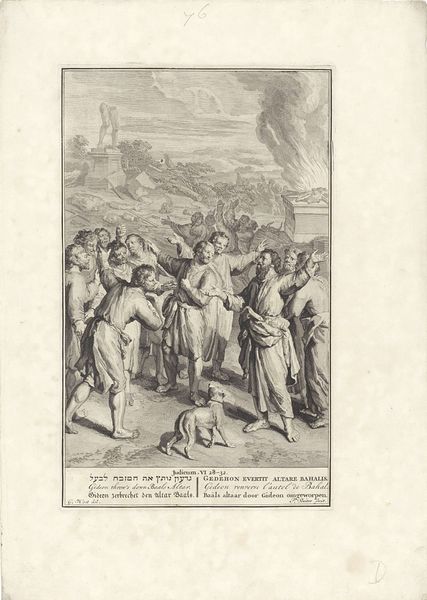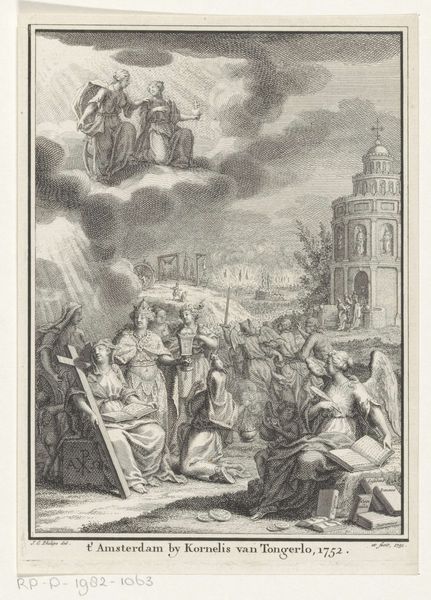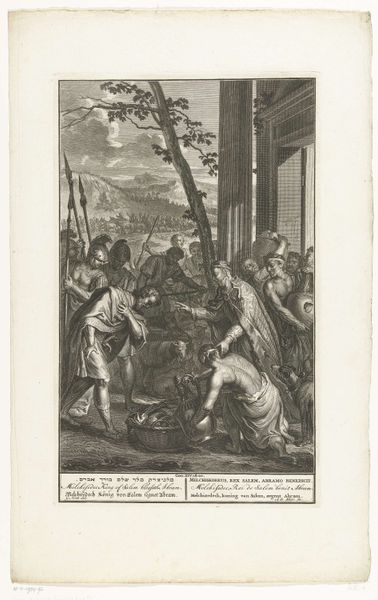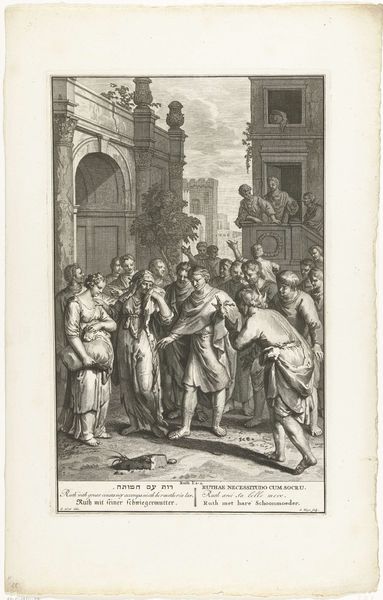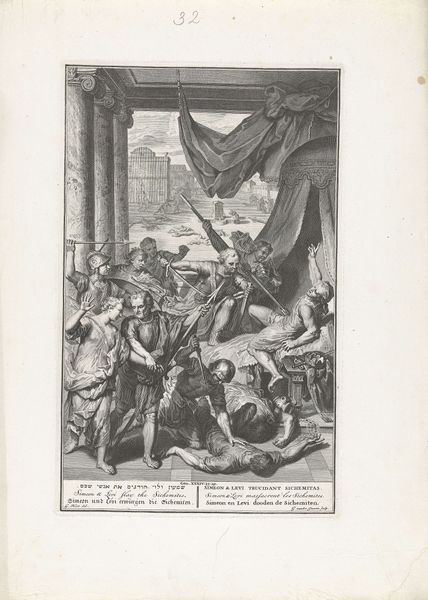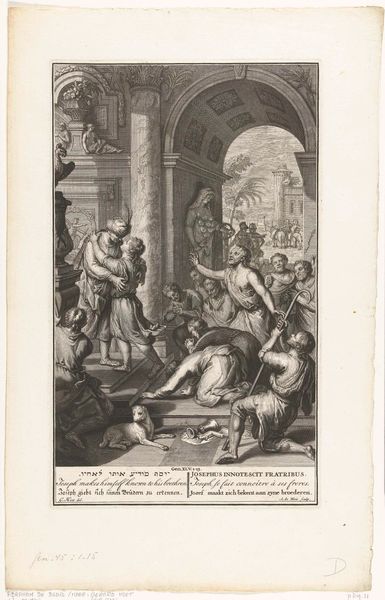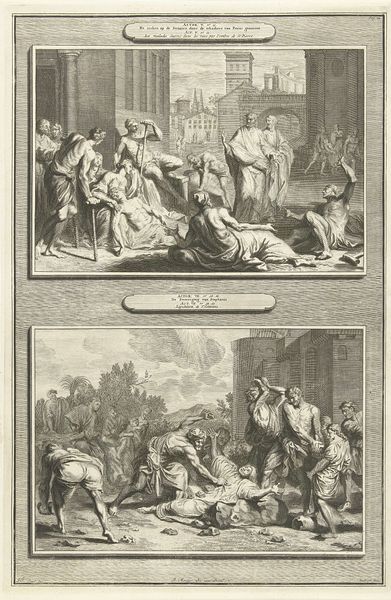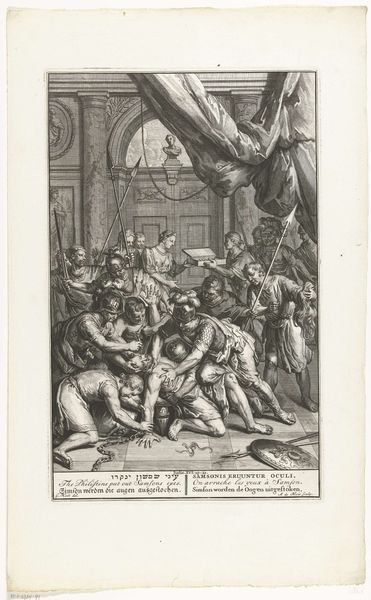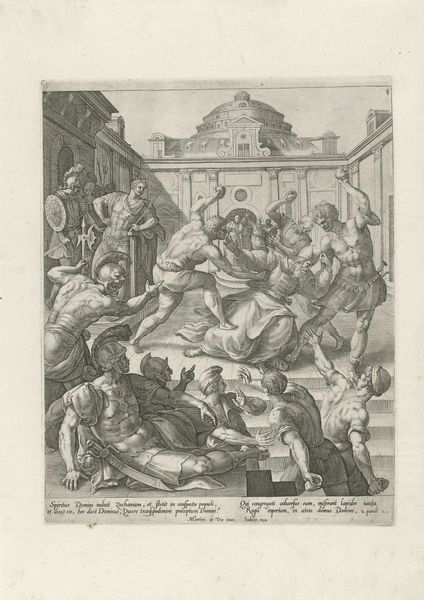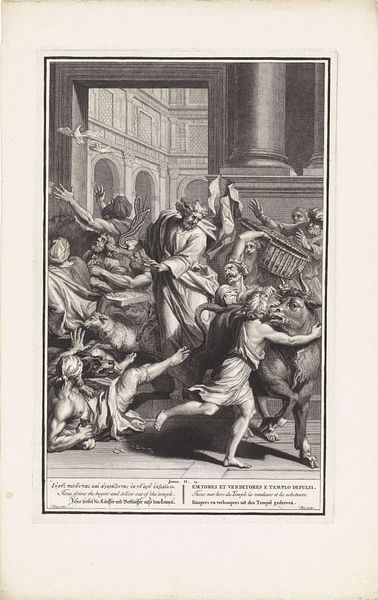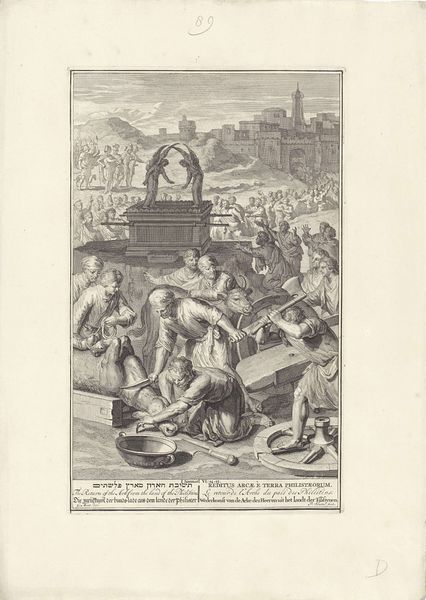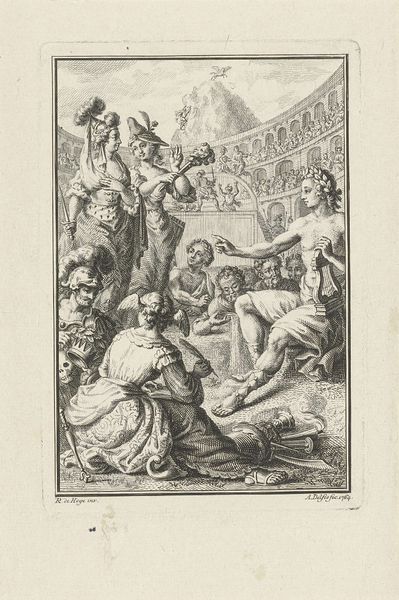
print, engraving
#
narrative-art
#
baroque
# print
#
old engraving style
#
personal sketchbook
#
history-painting
#
engraving
Dimensions: height 353 mm, width 211 mm
Copyright: Rijks Museum: Open Domain
Pieter Sluyter created this print, “The Israelites and the Moabite Women,” sometime between 1675 and 1733. It depicts a story from the Old Testament, in which the Israelites are seduced into idolatry by the women of Moab. In the foreground, we see men and women eating and drinking together, while in the background, there's a scene of sacrifice. This work is a potent representation of the dangers of cultural and religious assimilation. During the 17th and 18th centuries, there was a heightened concern about maintaining cultural and religious purity. Sluyter reflects on the tensions between the desire for integration and the fear of losing one's distinct identity. The print raises questions about gender roles and power dynamics. The Moabite women are portrayed as temptresses, and the Israelites as vulnerable to their allure. How do these representations reflect the anxieties of Sluyter's time? The emotional resonance of this piece lies in its portrayal of a community struggling to define itself amidst external influences.
Comments
No comments
Be the first to comment and join the conversation on the ultimate creative platform.

